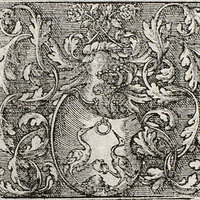
Arnold Tóth
Museum expert, ethnographer and historian, director of the Herman Ottó Museum between 2017–2019 (Miskolc, North-East Hungary). Main field of research is folklore, popular literacy, manuscripts, memoirs in the 19–20th centuries. Local history, youth organisations in the 20th century.
Supervisors: Trustee of the National Cultural Fund of Hungary, 2016-2020 and Since 2019: Board member - executive chairman of the Pulszky Society - Hungarian Museum Association
Supervisors: Trustee of the National Cultural Fund of Hungary, 2016-2020 and Since 2019: Board member - executive chairman of the Pulszky Society - Hungarian Museum Association
less
Related Authors
Laszlo Kurti
University of Miskolc
Nikoletta Lukács
Hungarian National Museum
Ibolya Szamborovszkyné Nagy
Ferenc Rakoczi II Transcarpathian Hungarian Institute
Zoltán Csepregi
Lutheran University,Budapest
Zsófia Bárány
Hungarian Academy of Sciences
Zoltán Erdős
Eötvös Loránd University Budapest
Zsuzsa Pető
Hungarian National Museum
InterestsView All (11)










Uploads
Books by Arnold Tóth
Manuscript Wedding Usher Books on North-Eastern Hungary
This book aims to investigate 19th-century wedding usher books and wedding usher verses in terms of text linguistics, as well as textual history and history of the genre. The prime reason for the selection of this topic was the peculiar, dual nature of the area of scholarly research that these folkloric texts represent. On the one hand, the presence of a wedding usher, called vőfély [vøːfeːj] and acting as a sort of ’master of ceremonies’ at rural weddings, is a widely known and amply documented fact of ethnography in almost the entire Carpathian Basin. Such wedding ushers recite rhymes while directing the wedding proceedings and entertaining participants. Distributed in chapbooks or manuscripts, vőfély verses have been known since the late 18th century as a common, indispensible and characteristic part of any wedding celebration. They are mostly rhymed in form and recited, closely and functionally following the various stages of the wedding. Over the past 180 to 200 years, this custom has been extensively written about in very diverse bodies of literature, giving descriptions of varying complexity and quality. Collections of usher verses which have been published in print include thousands of titles, added to which are at least the same number of unpublished collections and handwritten sources held in public archives. Wedding ushers and usher verses maintained their presence in folk culture, and then, popular culture through the 19th and 20th centuries, and survive to date. Though there have been some alterations due to changes in the customs of wedding celebrations, the texts discussed herein represent one of the most stable and longest-lived elements of Hungarian popular culture. The 21st century seems to see a renaissance of this, mainly as a ‘survival’ or ‘revival’ phenomenon of folklorism and a conscious preservation of cultural heritage.
Papers by Arnold Tóth
It was an architectural challenge to adapt the office block to the museum functions: new exhibition hall, collection depositories, restoration studio, photo studio, library was needed instead of bureau spaces. The transformation was successful, the building served as a museum very well. In 1996 it housed the most popular exhibition ever, the archaeological exhibition of the Hungarian Conquest. In 2005 there was a second reconstruction of the building, when the new Art Gallery was opened. The latest extension, the newly constructed wing of the Pannon Sea Museum was finished in 2013.
The emblematic building has its own story – the hidden memories of the contemporaries can be a fruitful subject of a museum’s history research. In 2018 an oral history video interview was recorded with Béla Offertáler-Havasi (born in 1938, aged 80). He was a politically active member of the Hungarian Socialist Labour Party, and had high positions in the communist administration as a leading office-bearer of the Young Communist League. Between 1964–1979 he worked in the building of the Communist Party headquarters. His personal memories are very valuable sources of the museum’s history, according to the process of metamorphosis – how the communist party office building became a successful museum in the second half of the 20th century.
The paper is looking for the origins of the Hungarian wedding poetry, so-called wedding usher books and wedding usher verses (‘vőfély’ verses, manuscript ‘vőfély’ books and chapbooks). The 19th-century Hungarian wedding poetry have proved to be directly related to works of 18th-century popular poetry, or, at least sharing a few textually identical lines or stanzas. For derisive rhymes, relatively few analogies were found, but multiple topoi and motifs of derisive rhymes about unmarried and married women, as well as about ethnic groups appear in vőfély verses. These sometimes surprising analogies typically occur among the examples of wedding-time jesting poetry. Derisive rhymes tend to be 563 missing from the repertoire of chapbooks, but are found in several variants in manuscript public poetry. This phenomenon suggests that chapbooks contain only a specific portion of vőfély verses in common use in the 19th century – the portion that was regarded as completely socially acceptable and ‘presentable’. At the same time, works which were not adopted into the recognised, standard repertoire of wedding usher books because of containing obsolete, archaic or just unprintable passages, did certainly survive either in oral tradition or manuscripts. In addition to textual analogies, a considerable number of themes, topoi, motifs and phrases analogous with those used in popular poetry can be identified. During the survival of the popular poetry derisive rhymes, four typical changes can be recognized in the 19th century. 1) Fragmentary survival of the texts; 2) Selection among the surviving phenomenons; 3) Changes of the basic communication methods; 4) Hidden survival of the stanzas and motifs, wrapped in different genres of the wedding poetry. These changes were caused by the social and cultural development of the Hungarian society, due to those intellectual attitudes which tried to improve the style and content of the wedding usher books and wedding usher verses.
The paper treats a particular chapter of the history of typography in Hungary, giving an insight into the types of printed wedding usher books, a popular category of 19th century chapbooks, and their role in folklore. The wedding usher verse, a genre typical of rural weddings in Hungary, was born in the late 18th century. Wedding ushers, called vőfély [vø꞉fe꞉j] in Hungarian, acted as ‘masters of ceremonies’ at rural weddings, reciting rhymes written for the purpose of directing the wedding proceedings and entertaining participants. Publishers and printing houses were quick to recognize the potential of this genre. Chapbooks are the earliest known sources of wedding scenarios and wedding dinner related verses. The first printed usher book in Hungarian appeared in about 1793. Such cheap booklets published under various titles throughout the 19th century fall into eight different categories. Most of them borrowed content from each other, often resulting in some 18th century verses appearing even in 20th century chapbooks. It is particularly important that the paper offers a ‘family tree’ depicting how eight types of publications evolved from each another. Chapbooks can be used to study temporary phenomena of folk poetry, as they represent the transition from oral to written culture, with transitional phenomena also being manifested between manuscript and print. Authors, on the other hand, represent transitions between social classes. Usher chapbooks are one of the earliest signs of the rise of a single popular culture in Hungary.
Manuscript best man's books form a well-definable and widespread source of popular literacy that have been used in almost all Hungarian-speaking communities. The research of these manuscript books, along with the traditional considerations of folklore studies, has primarily focused on the texts that these books contain. The article, on the basis of eight manuscript best man's books that are mainly from the 19th century and from north-eastern Hungary, attempts at pointing out some instructive phenomena of popular literacy and providing a proposal for a classification of these texts.
In the introductory chapter those former typologies are presented that have investigated the place of best man's books within the whole system of popular literacy. The analysis of sources explores the inner structure and history of popular manuscipt books taking into consideration contents and writing techniques. The authors of the manuscript books and the typical attitudes related to literacy are also identified in the article.
The author of the article eventually proposes a typology of manuscript best man's books hoping the applied considerations would be useful in the case of other types of manuscripts as well. The proposed categories are as follows: according to function script-of custom collection and mixed collection; according to origin simultaneously written (copied) collection and continuously augmented collection; according to authorship single and multi-authored (and multi-generational) manuscripts.
The Hungarian ethnography divides the wood-processing industry into three groups. The first group is the 'domestic production', creating simple tools for one's own use. The secong group is the 'domestic industrial production', including rural producers who used to make traditional wooden tools on a large scale and traded them on the markets. The third group equals the 'craftmanship' that was organised in guild till 1872 and in industrial unions, later on. The collections of the Herman Ottó Museum (Miskolc, Hungary) involves a large group of artworks from all three categories. The 'shepherd's art' as a folk tradition is a separate and richly presented brach of the domestic woodcarving. The domestic industrial production is covered by the collection of decorative yokes, spindles, mangles, pstons and hay forks from the Bükk Mountains. Talking about the craftmanship, it is necessary to mark out two groups of collection articles. Considering the nearby region of Tokaj, we have to stress the importance of the cooperage that was widely prevalent here. It is represented by the collection of tools and devices from a cooperage workshop. Regarding the ethnography, it is necessary to underline the work of painting carpenters from the towns of Miskolc and Sátoraljaújhely, who once used to create ornamented (painted) rustic furniture as well as carved and painted church interiors.
Manuscript Wedding Usher Books on North-Eastern Hungary
This book aims to investigate 19th-century wedding usher books and wedding usher verses in terms of text linguistics, as well as textual history and history of the genre. The prime reason for the selection of this topic was the peculiar, dual nature of the area of scholarly research that these folkloric texts represent. On the one hand, the presence of a wedding usher, called vőfély [vøːfeːj] and acting as a sort of ’master of ceremonies’ at rural weddings, is a widely known and amply documented fact of ethnography in almost the entire Carpathian Basin. Such wedding ushers recite rhymes while directing the wedding proceedings and entertaining participants. Distributed in chapbooks or manuscripts, vőfély verses have been known since the late 18th century as a common, indispensible and characteristic part of any wedding celebration. They are mostly rhymed in form and recited, closely and functionally following the various stages of the wedding. Over the past 180 to 200 years, this custom has been extensively written about in very diverse bodies of literature, giving descriptions of varying complexity and quality. Collections of usher verses which have been published in print include thousands of titles, added to which are at least the same number of unpublished collections and handwritten sources held in public archives. Wedding ushers and usher verses maintained their presence in folk culture, and then, popular culture through the 19th and 20th centuries, and survive to date. Though there have been some alterations due to changes in the customs of wedding celebrations, the texts discussed herein represent one of the most stable and longest-lived elements of Hungarian popular culture. The 21st century seems to see a renaissance of this, mainly as a ‘survival’ or ‘revival’ phenomenon of folklorism and a conscious preservation of cultural heritage.
It was an architectural challenge to adapt the office block to the museum functions: new exhibition hall, collection depositories, restoration studio, photo studio, library was needed instead of bureau spaces. The transformation was successful, the building served as a museum very well. In 1996 it housed the most popular exhibition ever, the archaeological exhibition of the Hungarian Conquest. In 2005 there was a second reconstruction of the building, when the new Art Gallery was opened. The latest extension, the newly constructed wing of the Pannon Sea Museum was finished in 2013.
The emblematic building has its own story – the hidden memories of the contemporaries can be a fruitful subject of a museum’s history research. In 2018 an oral history video interview was recorded with Béla Offertáler-Havasi (born in 1938, aged 80). He was a politically active member of the Hungarian Socialist Labour Party, and had high positions in the communist administration as a leading office-bearer of the Young Communist League. Between 1964–1979 he worked in the building of the Communist Party headquarters. His personal memories are very valuable sources of the museum’s history, according to the process of metamorphosis – how the communist party office building became a successful museum in the second half of the 20th century.
The paper is looking for the origins of the Hungarian wedding poetry, so-called wedding usher books and wedding usher verses (‘vőfély’ verses, manuscript ‘vőfély’ books and chapbooks). The 19th-century Hungarian wedding poetry have proved to be directly related to works of 18th-century popular poetry, or, at least sharing a few textually identical lines or stanzas. For derisive rhymes, relatively few analogies were found, but multiple topoi and motifs of derisive rhymes about unmarried and married women, as well as about ethnic groups appear in vőfély verses. These sometimes surprising analogies typically occur among the examples of wedding-time jesting poetry. Derisive rhymes tend to be 563 missing from the repertoire of chapbooks, but are found in several variants in manuscript public poetry. This phenomenon suggests that chapbooks contain only a specific portion of vőfély verses in common use in the 19th century – the portion that was regarded as completely socially acceptable and ‘presentable’. At the same time, works which were not adopted into the recognised, standard repertoire of wedding usher books because of containing obsolete, archaic or just unprintable passages, did certainly survive either in oral tradition or manuscripts. In addition to textual analogies, a considerable number of themes, topoi, motifs and phrases analogous with those used in popular poetry can be identified. During the survival of the popular poetry derisive rhymes, four typical changes can be recognized in the 19th century. 1) Fragmentary survival of the texts; 2) Selection among the surviving phenomenons; 3) Changes of the basic communication methods; 4) Hidden survival of the stanzas and motifs, wrapped in different genres of the wedding poetry. These changes were caused by the social and cultural development of the Hungarian society, due to those intellectual attitudes which tried to improve the style and content of the wedding usher books and wedding usher verses.
The paper treats a particular chapter of the history of typography in Hungary, giving an insight into the types of printed wedding usher books, a popular category of 19th century chapbooks, and their role in folklore. The wedding usher verse, a genre typical of rural weddings in Hungary, was born in the late 18th century. Wedding ushers, called vőfély [vø꞉fe꞉j] in Hungarian, acted as ‘masters of ceremonies’ at rural weddings, reciting rhymes written for the purpose of directing the wedding proceedings and entertaining participants. Publishers and printing houses were quick to recognize the potential of this genre. Chapbooks are the earliest known sources of wedding scenarios and wedding dinner related verses. The first printed usher book in Hungarian appeared in about 1793. Such cheap booklets published under various titles throughout the 19th century fall into eight different categories. Most of them borrowed content from each other, often resulting in some 18th century verses appearing even in 20th century chapbooks. It is particularly important that the paper offers a ‘family tree’ depicting how eight types of publications evolved from each another. Chapbooks can be used to study temporary phenomena of folk poetry, as they represent the transition from oral to written culture, with transitional phenomena also being manifested between manuscript and print. Authors, on the other hand, represent transitions between social classes. Usher chapbooks are one of the earliest signs of the rise of a single popular culture in Hungary.
Manuscript best man's books form a well-definable and widespread source of popular literacy that have been used in almost all Hungarian-speaking communities. The research of these manuscript books, along with the traditional considerations of folklore studies, has primarily focused on the texts that these books contain. The article, on the basis of eight manuscript best man's books that are mainly from the 19th century and from north-eastern Hungary, attempts at pointing out some instructive phenomena of popular literacy and providing a proposal for a classification of these texts.
In the introductory chapter those former typologies are presented that have investigated the place of best man's books within the whole system of popular literacy. The analysis of sources explores the inner structure and history of popular manuscipt books taking into consideration contents and writing techniques. The authors of the manuscript books and the typical attitudes related to literacy are also identified in the article.
The author of the article eventually proposes a typology of manuscript best man's books hoping the applied considerations would be useful in the case of other types of manuscripts as well. The proposed categories are as follows: according to function script-of custom collection and mixed collection; according to origin simultaneously written (copied) collection and continuously augmented collection; according to authorship single and multi-authored (and multi-generational) manuscripts.
The Hungarian ethnography divides the wood-processing industry into three groups. The first group is the 'domestic production', creating simple tools for one's own use. The secong group is the 'domestic industrial production', including rural producers who used to make traditional wooden tools on a large scale and traded them on the markets. The third group equals the 'craftmanship' that was organised in guild till 1872 and in industrial unions, later on. The collections of the Herman Ottó Museum (Miskolc, Hungary) involves a large group of artworks from all three categories. The 'shepherd's art' as a folk tradition is a separate and richly presented brach of the domestic woodcarving. The domestic industrial production is covered by the collection of decorative yokes, spindles, mangles, pstons and hay forks from the Bükk Mountains. Talking about the craftmanship, it is necessary to mark out two groups of collection articles. Considering the nearby region of Tokaj, we have to stress the importance of the cooperage that was widely prevalent here. It is represented by the collection of tools and devices from a cooperage workshop. Regarding the ethnography, it is necessary to underline the work of painting carpenters from the towns of Miskolc and Sátoraljaújhely, who once used to create ornamented (painted) rustic furniture as well as carved and painted church interiors.
The article is a research report summarising the achievements and the further possibilities of the investigation of 19th century manuscript best men’s books. In Hungarian wedding customs best man had a central function guiding and commenting on the wedding rite and the phases of the wedding dinner with his rhymes. From the end of the 18th century cheap popular booklets of best men’s rhymes were published. These booklets became well spread among the Hungarian peasants and quite a number of manuscript versions were put down in the 19th century, whose texts reflected local characteristics of the wedding customs and the best men’s rhymes. The best men’s texts are typical products of the early modern popular poetry, which were copied and varied in students’ songbooks and in manuscript booklets. The first part of the article
summarises the scholarly achievements of the research of best men’s books in Hungary. Then it defines the theoretical and methodological framework applied in the author’s own research project. The second part of the article contains a historical-comparative textual analysis publishing and commenting on excerpts from three manuscript best
men’s books. All three manuscripts are from the village of Kisgyőr (in north-eastern Hungary, Borsod county) and were recorded around 1840, in 1880–1881 and in 1909. In course of the 19th century two remarkable modifications can be observed in the corpus: on the one hand, instead of prose texts the rhymed verses became preferred, and on the other hand, instead of the entertaining genres of 17–18th century wedding poetry, the rhymes presenting the courses of the wedding dinner got into the focus of interest.
documentation, as well as in developing and implementing effective measures for protecting the element. As a bottom-up system was set up for developing the national inventories in Hungary, an important question arose at the outset: how to reach the bearers themselves? A nation-wide networking system was developed, including regional experts (museum professionals, ethnographers, and folklorists) called ‘county rapporteurs’,
whose role is to provide direct aid to the relevant communities (http://szellemikulturalisorokseg.hu/).